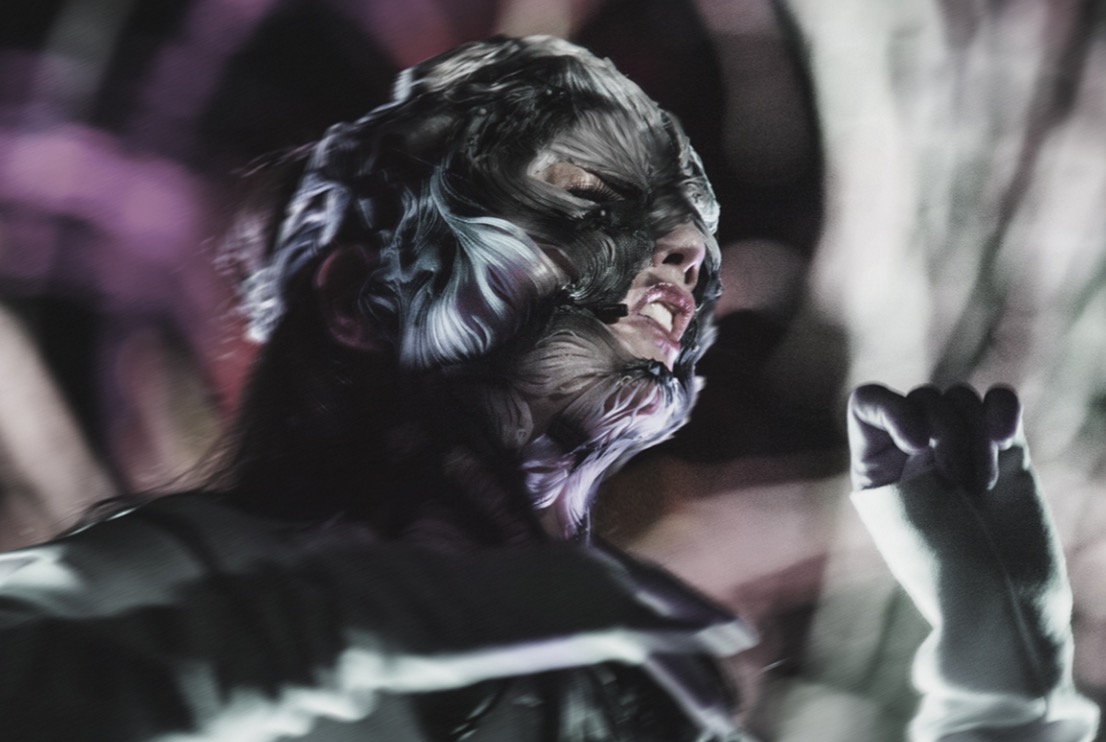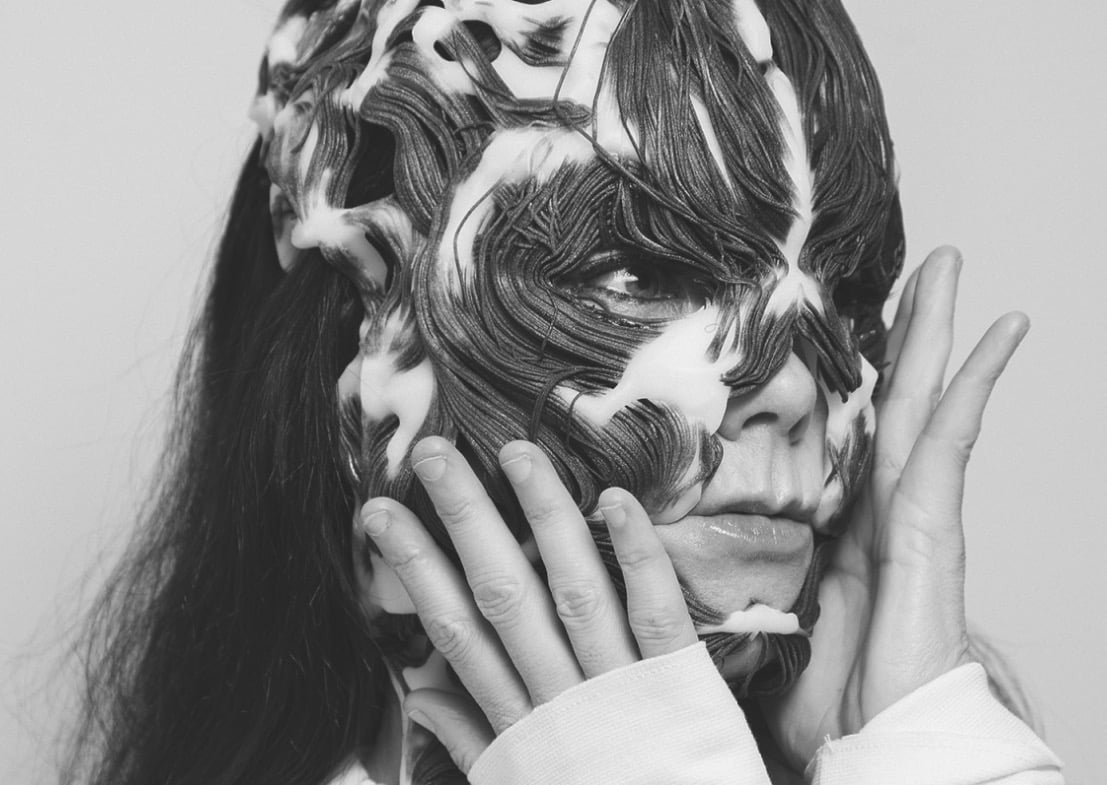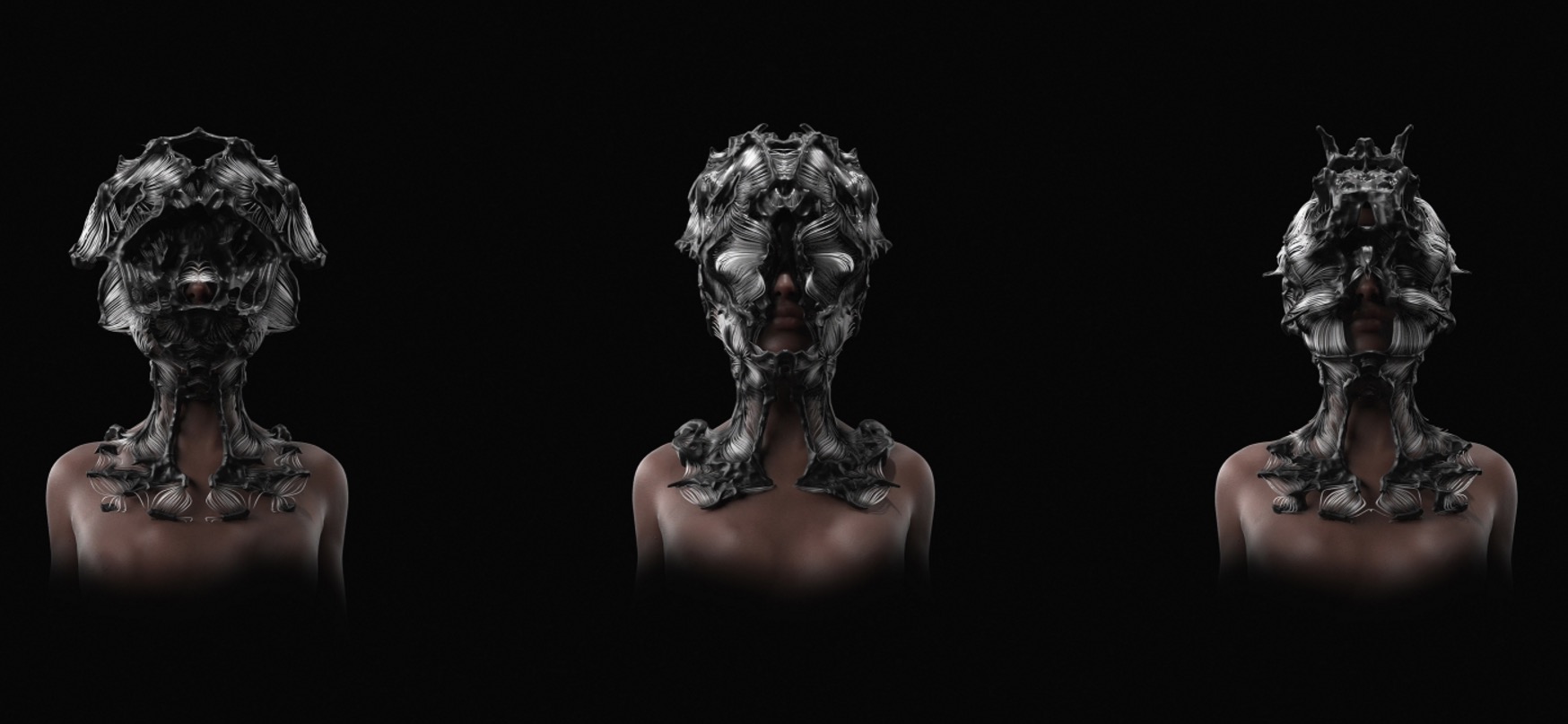
This week’s selection is the strange Rottlace mask by the MIT Mediated Matter Group.
The mask is actually a collection of detailed 3D printed masks developed for Icelandic singer Björk, one of which she wore during a musical performance in Tokyo.
MIT explains the theory behind the design:
The designs are informed by the geometrical and material logics that underlie the human musculoskeletal system; specifically, the complex structure of muscles, connective tissues, tendons, and ligaments that modulate the human voice. This continuous weave of dense collagen fibers form functional ‘typologies’ of connections: muscle-to-bone, bone-to-bone, and muscle-to-muscle. As in the human body, where continuous, collagenous elements alter their chemical and mechanical properties as a function of the tension they exert or endure, each mask is designed as a synthetic ‘whole without parts.’ The masks incorporate tunable physical properties recapitulating, augmenting, or controlling the facial form and movement behind them. Inspired by their biological counterpart, and conceived as ‘muscle textile,’ the masks are bundled, multi-material structures, providing formal and structural integrity, as well as movement, to the face and neck.


There are multiple variations of the mask as shown here. They’re designed to show a progression from something that resembles Björk’s actual face and leads to something entirely different.

Each is designed with fibrous strands representing muscles underlying the skin. This complex 3D printing is made possible by using Stratasys’ PolyJet technology, which permits blending of multiple materials within the same print. Here they’ve demonstrated not only the use of multiple materials, but also doing so in fine details. They explain:
Graded and tunable material properties are achieved through custom software as well as heterogeneous material modelling workflows. Combined, this computational framework enables micron scale control of 3D printable material placement over highly complex geometric domains. This enables the design and 3D printing of complex, large-scale objects with continuous variations of modulus and transparency, within a single build.
This project confirms my suspicion that when a powerful machine with many capabilities is placed in the hands of creatives, unpredictable and amazing results are always produced.
Via MIT

